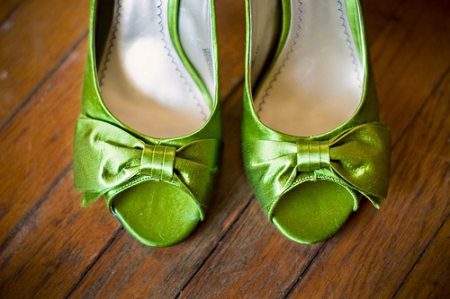You think you’re an eco warrior every time you remember to take your green bags to Coles. You congratulate yourself when you choose to put that Diet Coke bottle in the recycling bin. You drive a Prius to reduce carbon emissions. But you still slip on those Gucci pumps.
Your footprint may be more than a fashion statement – and the carbon footprint of a pair of shoes is causing many women to rethink their buying habits. The introduction of the carbon tax (and the associated increase in the cost of goods) may help drive even more people towards a growing trend towards eco fashion.
A woman owns 17 pairs of shoes at any one time and buys three new pairs a year, according to a survey conducted by ShopSmart magazine in the US. Meanwhile, Earthlab released a report stating the greenhouse gas emissions of a single pair of shoes to be anywhere from 9-90kg. A pair of thongs sits at about 9kg where hiking boots could reach 90kg.
The process of shoe production starts at the very basic level of raw materials; be that the birth of a cow, or the growth of cotton.
Emissions associated with the production of a pair of shoes are difficult to calculate. For example, government figures say dairy cows contribute 12 per cent of Australia’s carbon emissions in the form of potent methane gas. Footwear that is made from leather is just one of the by-products of this pollution.
Once raw materials are sourced, they must undergo manufacture, Australia’s second largest polluter according to the Australian Bureau of Statistics. The industry is responsible for 19 per cent of total primary energy use, and disposes of harmful waste into the atmosphere, rivers, lakes and contributes to the country’s landfill mass.
That is before the product is packaged and shipped only to spend a season on display before being coated in sale stickers – and before the packaging and eventually the shoes themselves are disposed of as waste.
Leading retailer chain David Jones disclosed that the company emits about 106,000 tonnes of greenhouse gasses per year, so the shoes that have already undergone the sourcing, production, packaging and shipping process then sit in a well-lit, air conditioned store, while buyers tramp in and out of automatic doors, using more energy and harming the environment.
In response to this cycle of environmental damage, more companies in the footwear industry are now opting to provide customers with a “nutritional value” style chart showing the environmental impact of products, and choosing to stock “greener” styles. Major accounting firm KPMG attributes this shift to consumer demand: women like to feel like they are making a difference by lowering their carbon footprint. A KPMG report states:
“Changing supplier and consumer behaviors as a result of increased awareness of carbon content of products may lead to product switching or switching to competitors who can demonstrate how carbon is being reduced within operations.”
Too complicated? Companies are warping into eco-friendly, nature-loving suppliers, because when the public feels like they are doing something for the environment by buying a product, they are more likely to throw dollars. Eco-fashion expert Greta Eagan applauds the introduction of a carbon tax for pushing producers into eco-friendly production.
“I do think we need pieces of legislation in place to help govern and guide more responsible production and manufacturing within the fashion industry,” she told Crikey.
Eagan is the founder of the sustainable fashion awareness and style website FashionMeGreen, which supports the idea of “fashion for the planet”. She thinks women can change their habits and become environmental ambassadors (almost) by changing a few simple habits.
“What women need to do is to individually carve out what is important to them – local production, low water use, fair trade, vegetable versus toxic dyes, organic fabrics, etc. – and then choose brands they respond to because of their style aesthetic and do their homework on those brands,” she said.
According to Eagan, every woman can reduce her carbon footprint by taking the time to do some research, and buying products that endeavour to help the environment.
There are plenty of brands that consciously endeavour to reduce their footprint. Eagan suggests Stella McCartney for vegan shoes, Osborne Design for ethical production and TOMS for social cause. Skate shoe brand Element’s Emerald line and Nike’s Considered also are cutting emissions. It takes a little research, but it is possible to lessen your own footprint by choosing smarter shoes.
KPMG predicts the cost of products will rise due to increased expenditure over all aspects of the industry. Electricity, logistics and packaging costs all weigh into the pricing process, which means we could see a rise in the cost of retail goods such as footwear.
But with 33 per cent of woman admitting to have spent over $100 on pair of shoes, this doesn’t look like it will be an issue for consumers.
This article was originally published on Crikey – www.crikey.com.au. Reproduced with permission.








